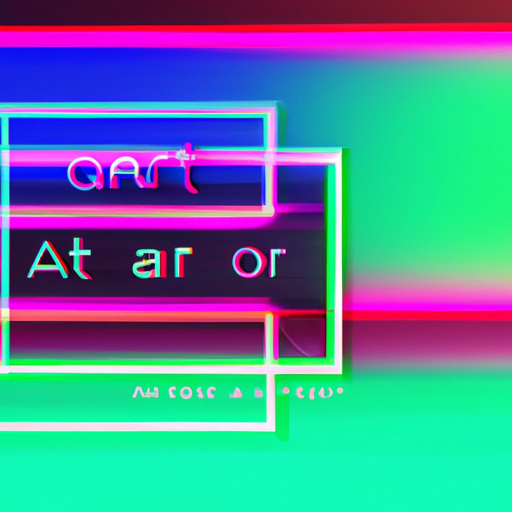
-
Table of Contents
- Innovative Techniques for Creating Depth and Parallax Effects
- Understanding Depth and Parallax Effects
- The Benefits of Depth and Parallax Effects
- Techniques for Creating Depth and Parallax Effects
- 1. Layered Backgrounds
- 2. Scroll-Activated Animations
- 3. 3D Illustrations and Graphics
- 4. Parallax Typography
- 5. Interactive Infographics
- Case Studies and Examples
- Case Study: Apple’s iPhone X Website
- Example: Google Earth
- Conclusion
Innovative Techniques for Creating Depth and Parallax Effects

Creating depth and parallax effects in design can greatly enhance the visual appeal and user experience of a website or digital project. These techniques add a sense of dimensionality and interactivity, making the content more engaging and memorable. In this article, we will explore some innovative techniques for creating depth and parallax effects, backed by research, examples, and case studies.
Understanding Depth and Parallax Effects
Before diving into the techniques, let’s first understand what depth and parallax effects are. Depth refers to the perception of distance between objects in a design. It can be achieved by using various visual cues such as size, position, color, and perspective. Parallax, on the other hand, is the apparent displacement or difference in the position of an object viewed along different lines of sight. In web design, parallax effects create an illusion of depth by moving different layers of content at different speeds as the user scrolls.
The Benefits of Depth and Parallax Effects
Depth and parallax effects offer several benefits for web design and user experience:
- Engagement: By adding depth and parallax effects, designers can create a more immersive and interactive experience for users, increasing engagement and time spent on the website.
- Visual Hierarchy: Depth cues help establish a clear visual hierarchy, guiding users’ attention to important elements and content.
- Storytelling: Parallax effects can be used to tell a story or guide users through a narrative, making the content more memorable and impactful.
- Brand Differentiation: Innovative use of depth and parallax effects can set a website apart from competitors, leaving a lasting impression on visitors.
Techniques for Creating Depth and Parallax Effects
Now, let’s explore some innovative techniques that can be used to create depth and parallax effects:
1. Layered Backgrounds
Layered backgrounds involve stacking multiple images or elements on top of each other to create a sense of depth. By using images with varying sizes, positions, and opacities, designers can achieve a visually appealing and immersive effect. For example, a website for a travel agency could use layered backgrounds to showcase different destinations, with each layer representing a different location.
2. Scroll-Activated Animations
Scroll-activated animations are a popular technique for creating parallax effects. As the user scrolls, different elements on the page animate or move at different speeds, creating a dynamic and engaging experience. For instance, a website for a sports brand could use scroll-activated animations to showcase different athletes in action, with their movements synchronized to the user’s scrolling speed.
3. 3D Illustrations and Graphics
Using 3D illustrations and graphics can add depth and realism to a design. By incorporating three-dimensional elements, designers can create a more immersive and interactive experience. For example, a website for a furniture store could use 3D graphics to allow users to rotate and interact with virtual furniture models, giving them a better sense of how the products would look in their own space.
4. Parallax Typography
Parallax typography involves animating text elements to create a sense of depth and movement. By applying parallax effects to typography, designers can make the text appear as if it’s floating or popping out of the screen. This technique can be particularly effective for highlighting important messages or creating a memorable visual impact.
5. Interactive Infographics
Infographics are a great way to present complex information in a visually appealing and easy-to-understand format. By adding interactivity to infographics, designers can enhance the user experience and create a sense of depth. For example, a website for a healthcare organization could use an interactive infographic to educate users about the human body, allowing them to explore different organs and systems by scrolling or clicking.
Case Studies and Examples
Let’s take a look at some real-world examples and case studies that demonstrate the effectiveness of these techniques:
Case Study: Apple’s iPhone X Website
Apple’s iPhone X website is a great example of using depth and parallax effects to create an engaging and immersive experience. The website features layered backgrounds that transition smoothly as the user scrolls, giving a sense of depth and interactivity. The scroll-activated animations showcase the phone’s features and gestures, making the content more dynamic and memorable.
Example: Google Earth
Google Earth is another example of innovative use of depth and parallax effects. The application allows users to explore the world in 3D, providing a realistic and immersive experience. By incorporating parallax effects, Google Earth creates a sense of depth as users navigate through different locations, making the exploration more engaging and interactive.
Conclusion
Depth and parallax effects are powerful techniques that can greatly enhance the visual appeal and user experience of a website or digital project. By using layered backgrounds, scroll-activated animations, 3D illustrations, parallax typography, and interactive infographics, designers can create immersive and engaging experiences that leave a lasting impression on users. When used effectively, these techniques can help establish a clear visual hierarchy, guide users through a narrative, and differentiate a brand from its competitors. So, don’t be afraid to experiment with these innovative techniques and take your designs to the next level.
